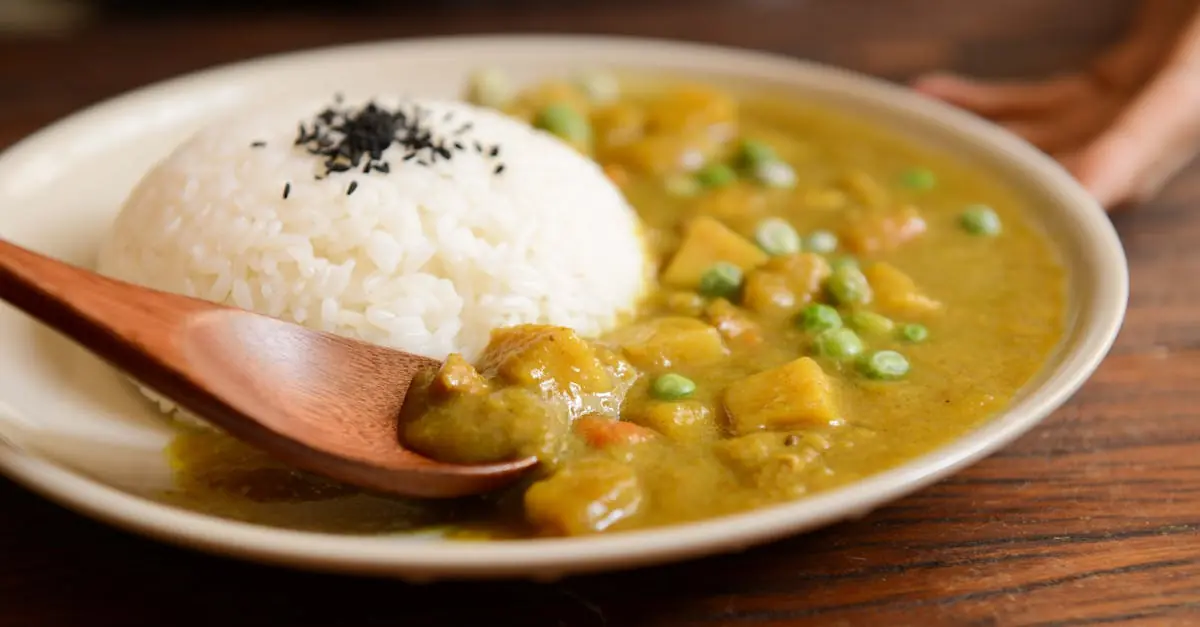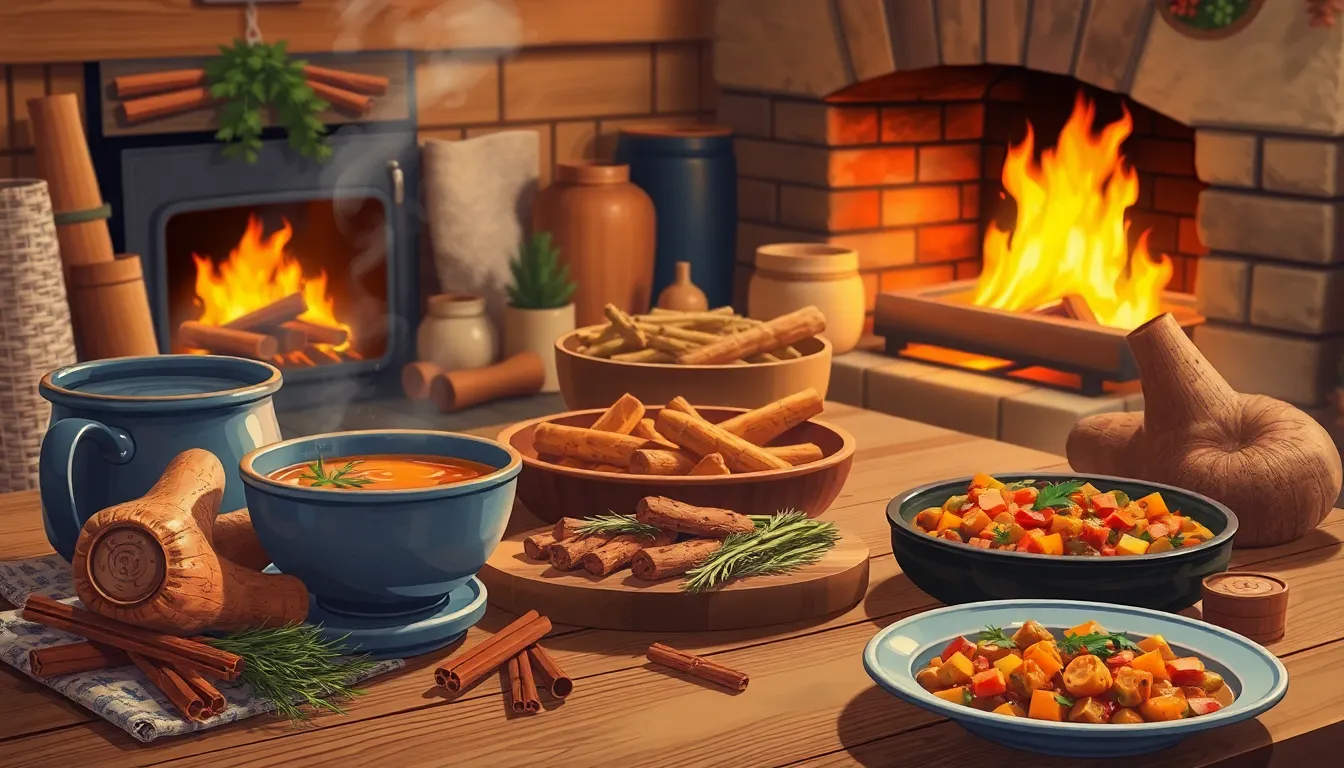Table of Contents
ToggleIn a world where bland meals reign supreme, the spice revival is shaking things up like a dance party in a pantry. Gone are the days of flavorless dinners that could put a hyperactive toddler to sleep. Today, food enthusiasts are rediscovering the vibrant world of spices, proving that a pinch of creativity can transform any dish from drab to fab.
Understanding Spice Revival
Spice revival signifies a notable trend in culinary practices aimed at rediscovering and reintroducing a range of spices into everyday cooking. Flavor enthusiasm enhances dishes while transforming bland meals into vibrant experiences. Individuals appreciating diverse spice profiles inspire creativity in kitchen endeavors.
Many food lovers favor spices such as cumin, turmeric, and cardamom for their unique tastes and health benefits. Cumin, for instance, adds depth to stews and soups, while turmeric boasts anti-inflammatory properties. Cardamom offers a fragrant touch to both sweet and savory dishes, reinforcing the versatility of spices.
Culinary experts highlight the significance of regional spice blends, including garam masala from India and baharat from the Middle East. Each blend embodies cultural heritage, encouraging home cooks to experiment beyond traditional seasoning. Spices not only elevate flavor but also invite discussions about history and geography in meals.
Chefs often share innovative recipes that feature spices prominently, demonstrating how they pair with various ingredients. Seasonal adjustments in spice use allow cooks to adapt recipes throughout the year. Insights from food blogs and cooking shows further inform enthusiasts about spice combinations, enhancing the spice revival movement.
Market trends reveal increasing demand for specialty spices. Retail sales of spices show a year-over-year growth of 6%, driven by consumers seeking new culinary adventures. Online spice subscriptions make it easier for households to explore, helping to sustain the spice revival trend in the long run.
Spice revival fosters a deeper connection between food, culture, and individual creativity, igniting a passion for cooking that embraces the diverse flavors available worldwide.
Historical Context of Spice Utilization
Spices have played a pivotal role in culinary history. Their usage traces back to ancient civilizations, fueling exploration and trade.
Ancient Trade Routes
The pursuit of spices influenced ancient trade routes, such as the Silk Road and the Spice Route. These pathways connected Asia, Europe, and Africa, facilitating the exchange of goods. Merchants transported commodities like pepper, cinnamon, and cloves across vast distances. Often, spices commanded high prices, serving as status symbols. Countries sought to control spice production and trade, driving colonization efforts. Significant impacts on global economics emerged from these activities, as spice trade established connections between cultures.
Cultural Significance of Spices
Spices carry immense cultural significance across different societies. In ancient Egypt, spices were used for preservation and rituals. India recognized spices as essential elements in traditional medicine and cuisine. Many religious ceremonies incorporate spices to symbolize purity and prosperity. Communities often celebrate harvest festivals through spice-related dishes, reflecting regional heritage. Recipes handed down through generations emphasize the deep-rooted traditions associated with spices. They also express local identities, showcasing unique flavor combinations and culinary techniques.
Modern Influences on Spice Revival
The renaissance of spices in cooking intertwines with modern culinary practices and health consciousness. Emerging trends influence how spices are integrated into daily meals.
Culinary Trends
Innovative cooking styles emphasize bold flavors through spice usage, inspiring chefs and home cooks alike. Fusion cuisines showcase spice blends that blend various cultural influences, creating exciting new dishes. Social media platforms promote visually appealing meals, encouraging culinary experimentation. Ingredient transparency leads to a demand for high-quality spices, prompting consumers to seek artisan products. Chef-led initiatives and culinary workshops focus on hands-on experiences with spices, further amplifying their appeal. Accessibility through online retailers has expanded the reach of specialty spices, allowing cooks to explore diverse flavors from their kitchens.
Health Awareness and Benefits
Growing health awareness shapes the approach to spice incorporation in diets. Turmeric, known for its anti-inflammatory properties, and cinnamon, recognized for its blood sugar regulation, become staples in health-conscious kitchens. Nutritional research highlights the antioxidant benefits of spices, prompting many to consider their health impacts. Home cooks embrace spices as natural food preservatives, reducing the need for artificial additives. The rise of holistic approaches to wellness encourages the use of spices in everyday meals, supporting overall health through flavorful eating. Culinary education increasingly covers the medicinal properties of spices, empowering individuals to make informed dietary choices.
Significant Spices in the Revival
The spice revival highlights several key spices that define modern culinary trends. Notable among these are turmeric, saffron, and cardamom, each offering unique flavors and benefits.
Turmeric
Turmeric stands out for its vibrant yellow hue and health benefits. Culinary enthusiasts appreciate its anti-inflammatory properties and antioxidant content, making it a staple for those seeking wellness through diet. Many incorporate turmeric into dishes like curries and soups, where it adds both flavor and visual appeal. Recipes featuring turmeric often showcase its versatility, pairing it with ingredients like ginger or coconut milk. The recent popularity of turmeric lattes demonstrates its adaptability in both savory and sweet realms.
Saffron
Saffron remains a coveted spice, celebrated for its rich flavor and aromatic profile. This spice imparts a distinct golden color to dishes such as paella and risotto, enhancing their visual and culinary appeal. Often described as the most expensive spice in the world, saffron derives its high value from the labor-intensive harvesting process. Many chefs embrace saffron for its ability to elevate traditional recipes and inspire new creations. The infusion of saffron extracts into desserts and beverages reflects its growing presence in diverse culinary practices.
Cardamom
Cardamom is increasingly favored for its unique taste, blending sweet and savory elements seamlessly. This spice plays a crucial role in both Indian cuisine and Middle Eastern dishes, providing depth and complexity. Often used in chai tea and spice blends, its aromatic qualities offer a refreshing twist to various recipes. Home cooks find cardamom’s versatility appealing, as it enhances desserts like cakes and cookies while also complementing savory stews and marinades. The rise of global cuisine highlights cardamom’s ability to connect diverse culinary traditions.
The Economic Impact of Spice Revival
The spice revival significantly influences economic trends in food markets. Market growth represents a clear indication of this resurgence, with the specialty spice sector experiencing a rise in demand. In 2022, the global spice market reached approximately $18.7 billion, projected to grow at a compound annual growth rate of 4.9% through 2028. Consumers increasingly seek unique flavors, prompting retailers and producers to adapt their offerings. E-commerce has bridged the gap between artisanal suppliers and home cooks, leading to increased visibility for rare spices. Specialty spice subscriptions are becoming more popular, fostering consumer engagement and continuous exploration within diverse culinary realms.
Sustainable farming practices play a crucial role in the spice revival’s economic impact. These practices not only protect the environment but also enhance the quality of spice production. Farmers adopting organic and eco-friendly methods contribute to higher market value, drawing health-conscious consumers. Additionally, sustainable practices promote biodiversity, ensuring the preservation of unique spice varieties. Fair trade initiatives are gaining traction, allowing smallholder farmers to access larger markets. Community involvement encourages local economies to thrive, ultimately resulting in more flavorful spices that resonate with buyers.
The spice revival is more than just a culinary trend; it’s a movement that reconnects people with the vibrant flavors of their heritage and the world around them. By embracing spices, home cooks and chefs alike are transforming everyday meals into extraordinary culinary experiences. This resurgence not only enhances taste but also promotes health and well-being through the incorporation of nutritious spices.
As the market for specialty spices continues to grow, the economic and environmental benefits of sustainable practices become increasingly evident. The spice revival fosters a deeper appreciation for diverse cultures and encourages creativity in the kitchen. With each dish, individuals are invited to explore a rich tapestry of flavors that celebrate history, health, and culinary innovation.







